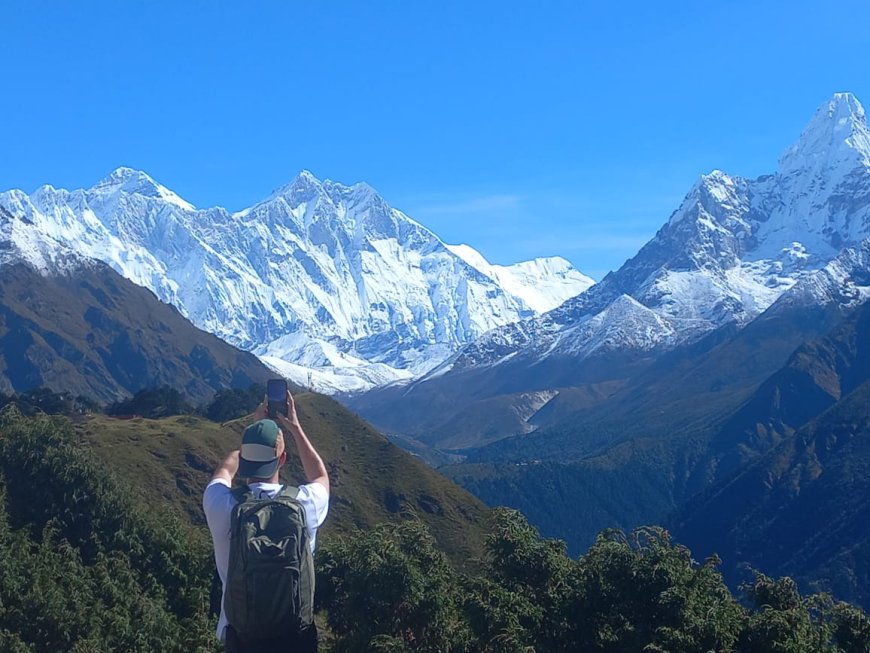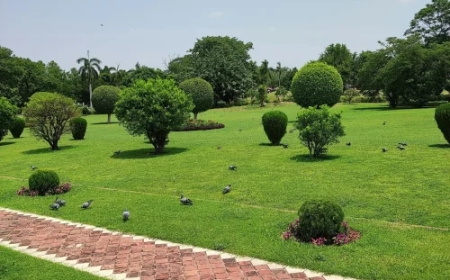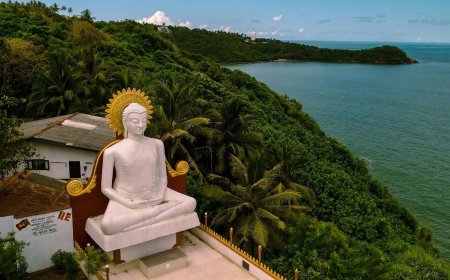How To Avoid The Killer Mistakes On Annapurna Trekking Trails
Avoid deadly mistakes on the Annapurna trekking trails with essential safety tips. Learn how to prevent altitude sickness, pack smart, respect permits and local culture, prepare for changing weather, and plan rest days to ensure a safe and successful trek in the Himalayas.

How To Avoid The Killer Mistakes On Annapurna Trekking Trails
Hiking the Annapurna trails is an amazing experience, but it does require some prep to steer clear of mistakes that could mess things up. A lot of accidents and health issues don't come from the trail but from the choices trekkers make and not listening to the Annapurna Base Camp Trek Guide. Knowing what to look out for is key to making your trip safe and enjoyable.
One big mistake is ignoring the signs of altitude sickness. Some trekkers push themselves without giving their bodies a chance to adjust. Altitude sickness can hit you with nasty headaches, nausea, and dizziness, and in severe cases, it can get really dangerous. To dodge this, take it slow, plan for rest days, stay hydrated, and pay attention to how you're feeling. If things get worse, head back down right away.
Another common pitfall is not taking the weather and trail conditions seriously. The weather in the Annapurna region can change fast, leading to cold temperatures, heavy rain, or snow. If youre trekking in the wrong gear, you risk hypothermia and slips. Always pack the right stufflike waterproof jackets, layered clothing, and good bootsand check the forecast before you go.
Poor planning and overpacking can wear you out and cause injuries. Bring only what you need, spread the weight evenly, and take breaks to recharge. If youre tired, youre more likely to make mistakes, especially on narrow or rocky paths.
Don't forget about permits and local rules. Trekking without the needed TIMS card and Annapurna Conservation Area Permit is against the law and could lead to fines or being sent back.
Lastly, being disrespectful towards the local culture and environment can create tension and ruin your vibe. Appreciate the beauty around you, dont litter, and be nice to the locals.
By steering clear of these common mistakes, youll have a safe and unforgettable trekking adventure in Annapurna.
Ignoring Proper Acclimatization
One of the biggest mistakes trekkers make on the Annapurna trails is not taking the time to acclimatize. A lot of people rush through without letting their bodies adjust to the higher altitudes. This can bring on acute mountain sickness (AMS), which might come with headaches, nausea, dizziness, and tiredness. In worse cases, it can lead to serious issues like high-altitude pulmonary edema (HAPE) or cerebral edema (HACE). To stay safe, its important to move up gradually, take rest days in places like Manang or Yak Kharka, and keep an eye on how youre feeling. Drinking plenty of water and staying a bit active during your breaks can also help. Always listen to your body, and be ready to head back down if things get worse. This can save lives and make your trek much more enjoyable.
Underestimating Physical Preparation
Many people underestimate how physically taxing the Annapurna trek can be. The trails have steep climbs, long hours of walking, and uneven groundall at high altitudes. If you dont prepare physically ahead of time, you might face exhaustion, cramps, or even injuries. Its a good idea to build your endurance, leg strength, and stamina with activities like hiking, running, or stair climbing weeks before you go. Training not only makes the trek easier but also lowers the chances of fatigue-related mistakes. Plus, being fit boosts your confidence and mental strength, which are key to finishing this tough trek.
Overpacking or Carrying Excess Weight
Carrying too much weight can weigh you down on the Annapurna trek. Heavy backpacks can tire you out more quickly, slow your pace, and increase your chances of getting blisters or back pain. Stick to the essentials: pack layered clothing, a waterproof jacket, good hiking boots, and just a few toiletries. Leave behind luxury items or too many gadgets. Distributing your gear evenly and using trekking poles can help with balance and ease the strain on your joints. A lighter pack means youll save energy for those steep climbs and long days ahead. Being smart about what you pack goes a long way in making your trek more comfortable and safe.
Skipping Permits and Necessary Paperwork
Not getting the right permits is a risky move on the Annapurna trails. Trekkers need to have a TIMS (Trekkers Information Management System) card and the Annapurna Conservation Area Permit (ACAP). These permits help regulate our activities and keep everyone safe and the environment protected. Trekking without them is illegal and can lead to fines or getting turned away at checkpoints. Getting permits is pretty easy in Kathmandu or Pokhara, so theres no reason to take the risk. Make sure to keep your permits on you at all times and follow local rules to avoid issues and support sustainable tourism.
Ignoring Weather Forecasts and Conditions
Not keeping an eye on the weather can turn your Annapurna trek into a tough situation. The Himalayan weather can change in a flash, with sudden snowstorms and heavy rain. If you go out without checking the forecasts, you risk facing hypothermia, avalanches, or landslides. Always check the weather updates before and during your trek and be ready to change your plans if needed. Bring the right gear, like waterproof jackets and warm layers, to stay safe during bad weather. Being flexible and considering a delay or a change in your route when conditions get harsh is key for your safety and enjoyment.
Neglecting Hydration and Nutrition
Not staying hydrated and properly fueled is a big mistake on the Annapurna trek. High altitudes make it easier to get dehydrated since your body loses water faster. If you dont drink enough, you can feel tired and be more susceptible to altitude sickness. Always carry a reusable water bottle and purify water from streams or teahouses. Eating regular, balanced meals is also super important. The trail has local foods packed with carbs and proteinsmake sure to take advantage of that. Avoid too much alcohol or caffeine, as they can dehydrate you. Keeping up with fluids and healthy food is key to staying strong, preventing sickness, and keeping your spirits up.
Disregarding Trail Etiquette and Local Customs
Not respecting trail etiquette and local customs can lead to misunderstandings and spoil your experience. The Annapurna region has diverse communities with rich traditions. Its important to honor local customslike taking off your shoes before entering homes or religious placesand to be polite to locals. On tight paths, give way to hikers coming uphill and keep your noise down. Always pack out your trash and avoid damaging nature. Showing respect for the culture not only enhances your trek but also helps preserve the areas unique heritage. Being a considerate trekker helps create positive memories for both you and the locals.
Failing to Carry Essential Safety Gear
Forgetting to pack essential safety gear on the Annapurna trek is a serious mistake. You need basic items like a first-aid kit, a headlamp, a whistle, a map or GPS, and water purification tablets. These tools can help you deal with emergencies, sudden weather changes, or getting lost. Also, having trekking poles can improve your balance and reduce strain on your joints. A good communication device, like a fully charged phone or a satellite messenger, can be a lifesaver. Having the right gear makes you feel safer and more prepared to handle unexpected situations.
Rushing the Trek and Missing Rest Days
Hurrying through the Annapurna trek and skipping rest days is a major mistake that can lead to altitude sickness and exhaustion. The trek gradually increases in altitude, and your body needs time to adapt. If you skip breaks, you risk headaches, nausea, and even serious conditions like HAPE or HACE. Taking breaks at important spots like Manang is crucial for recovery and acclimatization. Moving too fast can also lessen the enjoyment of your trek and increase your chance of getting hurt. A well-paced itinerary with scheduled breaks will help you maintain your strength and ensure a safer, more rewarding experience on the trail.
Not Having a Backup Plan for Emergencies
Not preparing for emergencies can turn small issues into major problems during the Annapurna trek. Unexpected weather changes, injuries, altitude sickness, or lost gear can throw a wrench in your plans. Its smart to have emergency contacts, a communication device, and knowledge of nearby rescue options. Getting travel insurance that covers helicopter evacuation and medical care is a good idea. Be sure to let someone know your plans and when you expect to check in. Being ready for anything ensures you can react quickly and get help when its needed, making your trek much safer.
How to get ready for the Annapurna Circuit?
To prep for the Annapurna Circuit, youll need to focus on building your endurance and strength, especially with cardio and leg workouts. Check out the route and plan your trip, making sure to include days for acclimatizing. Make sure you have the right gear, such as good hiking boots, warm layers, a solid backpack, and some altitude sickness meds. Get all your permits sorted out before you go. Learn about the symptoms of high altitude, and don't forget to pack enough water and snacks. Mentally gear up for long hiking days and be ready for changing weather. Its a good idea to hire a guide or join a group for added safety and fun.
What are some safety tips for trekking?
Some important safety tips are to acclimatize properly to avoid altitude sickness, stay hydrated, and eat well. Wear suitable clothing and good boots to handle different weather and terrains. Keep an eye on the weather and adjust your plans if necessary. Bring along a basic first aid kit, safety gear, and your permits. Respect local customs and stay mindful of trail etiquette. Dont rush, take breaks when you need to, and pay attention to how your body feels. Its also smart to have a communication plan and travel insurance.
Whats the toughest part of Annapurna?
The toughest part of the Annapurna Circuit is usually crossing Thorong La Pass, which is at 5,416 meters (17,769 feet). This section includes a steep climb at high altitude, putting your fitness and acclimatization to the test. The path can be icy and tricky, and the weather can change fast. Being prepared and timing things right is really important to get through this tough stretch safely.
Whats the death rate for the Annapurna Base Camp trek?
The Annapurna Base Camp trek is generally safer than the higher peaks in the Annapurna Massif. While there are some deaths each year, theyre pretty rare. Most incidents in the area happen due to severe weather, altitude sickness, or accidents on tougher climbs like Annapurna I, not on the base camp trek itself. Being well-prepared, taking your time to acclimatize, and being cautious can help lower the risks.



































